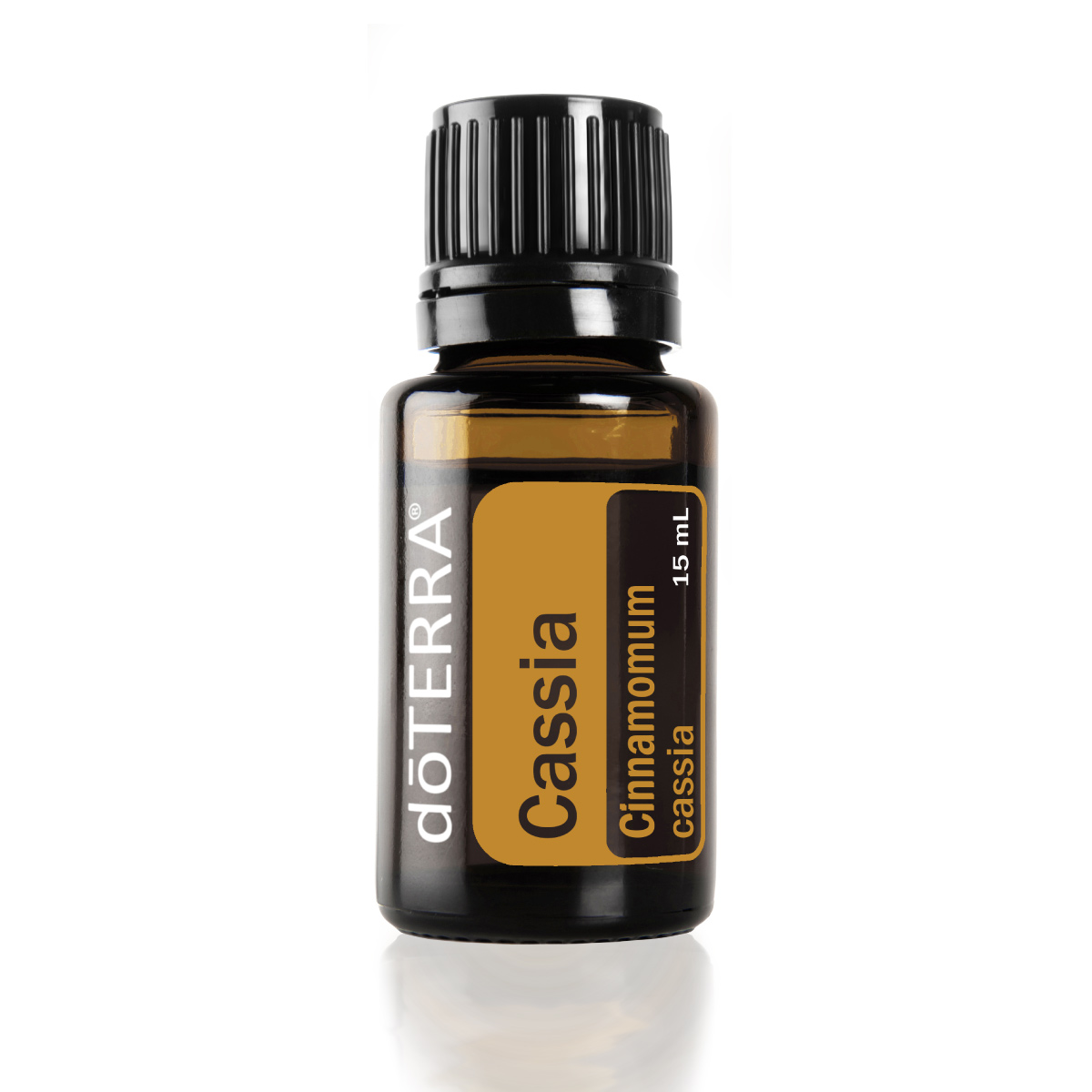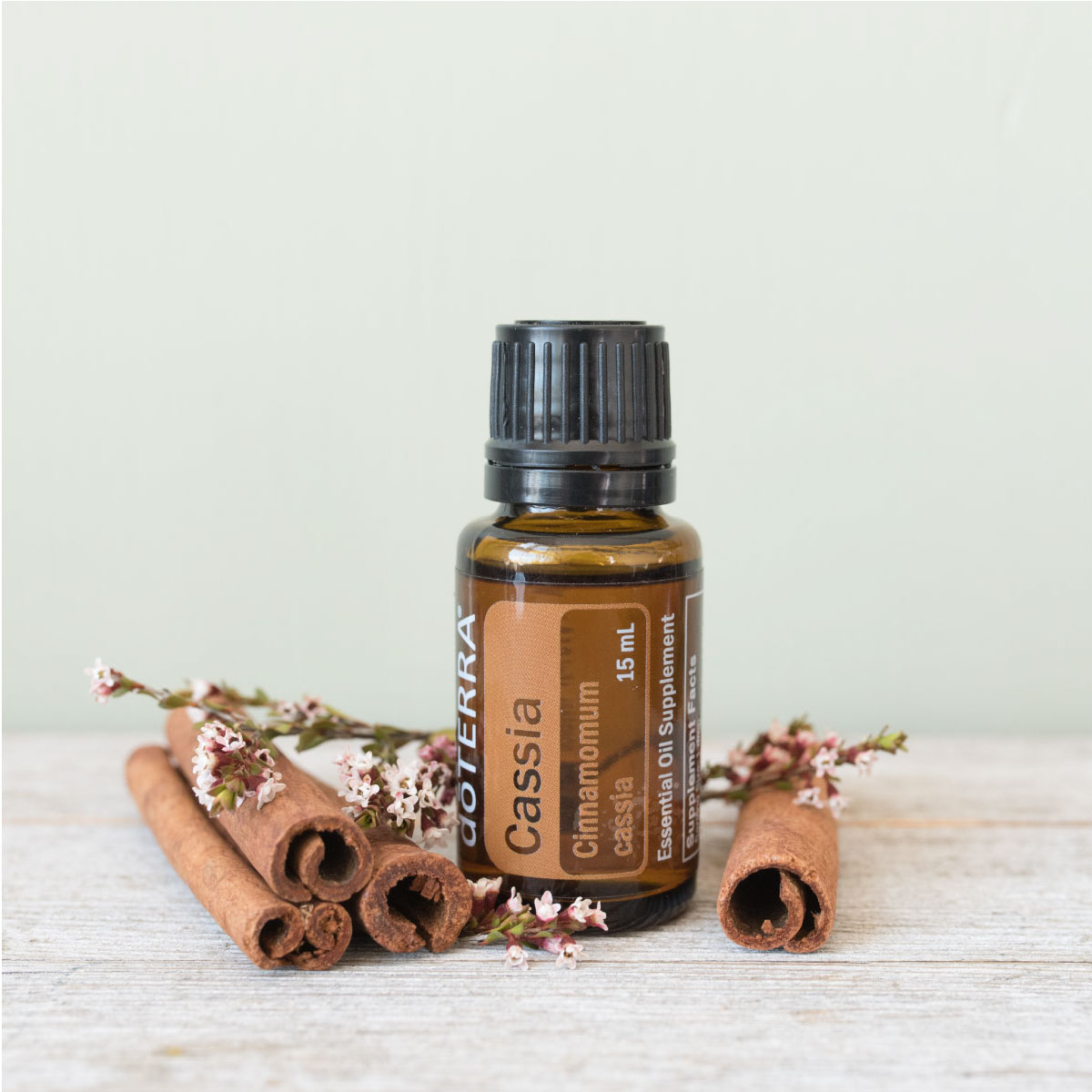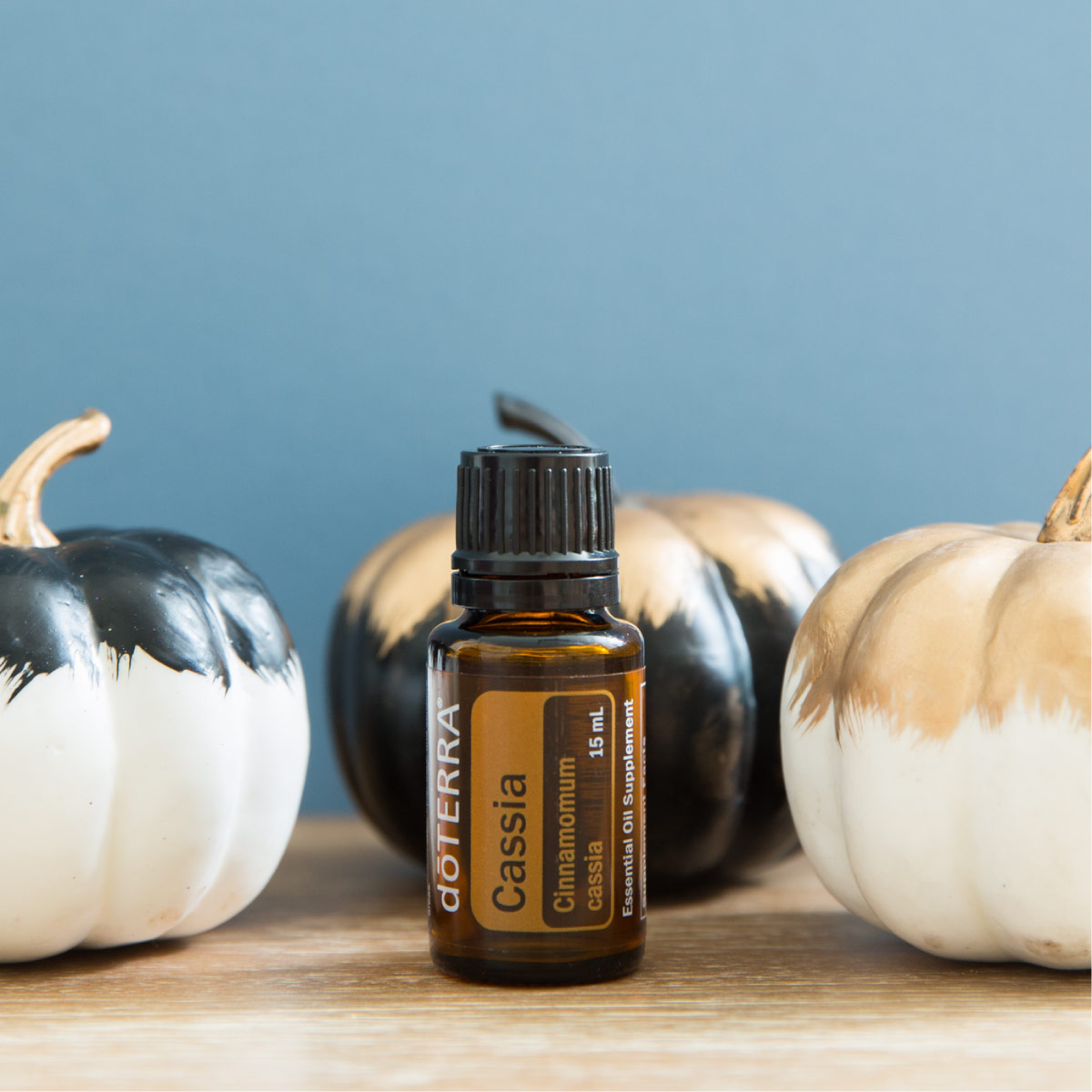Origin: a Latin derivative
meaning "Gift of the Earth."
- Shop
-
Our Story
- View Our Story Home
- Who We Are. . . .
- What We Do. . . .
- Why We Do It. . . .
-
dōTERRA[doh-teh-ruh]
Cassia Oil Uses and Benefits
Essential Oil Spotlight
Essential Oil Spotlight


Cassia Oil Product Description
Extracted from the bark of a Cinnamomum cassia plant, Cassia is a warm and spicy essential oil with a myriad of benefits that can help the mind and the body. For centuries, this sister to the cinnamon spice has been used internally to maintain physical health and aromatically to support emotional well-being. One of Cassia oil’s most prominent health benefits is its ability to promote healthy digestion when used internally.* Cassia is also a popular ingredient when making many different entrees, breads, and desserts. This spice is flavorful and can be used to replace cinnamon in a variety of food items. Along with its benefits to digestion, Cassia oil can be taken internally to support healthy immune function and to maintain cardiovascular health.*
Cassia oil is also powerful when used aromatically. In small doses, its strong and spicy aroma can be used to create an uplifting atmosphere that will promote emotional health. The fragrance emitted from Cassia is recognized anciently in the Old Testament for its powerful scent and calming properties. However, due to its classification as a hot oil, Cassia oil should be diluted with doTERRA Fractionated Coconut Oil when applied to the skin and can be very strong when inhaled directly.

Where to Buy Cassia Oil
To buy a bottle of potent and pure Cassia essential oil, visit the Cassia oil product page.
When selecting essential oils for purchase, it is crucial to find oils that are pure and potent. The purity and potency of an essential oil contributes greatly to the effectivity of the oils. If oils are impure or contain contaminants or filler substances, then they will lessen the mental and physical health benefits that accompany an oil. At doTERRA, we know that a pure and potent oil can help change lives and can cause impactful health benefits. In order to guarantee that our essential oils reach this high level of purity and potency, each batch of essential oils must go through the CPTG Certified Pure Tested Grade™ protocol. This protocol includes a series of strict tests that ensure that each essential oil sold is potent and pure so that when you purchase doTERRA essential oils, you can know that you are receiving the highest quality oils.
Cassia Oil Uses and Benefits
- Because internal use of Cassia oil can help support healthy immune function,* Cassia is a powerful commodity in protecting the body from seasonal threats. To keep your body healthy throughout the year, take one to two drops of Cassia oil in a Veggie Capsule for added immune support when needed.*
- Relax and unwind from the day with a massage using Cassia oil. Combine one drop of Cassia oil with doTERRA Fractionated Coconut oil and massage into skin for a warming sensation. When applied topically, Cassia oil has the ability to help soothe the body and its aroma can help to uplift the senses. This massage blend is especially beneficial during the winter months due to its warming properties and spicy scent.
- Looking for something to provide internal cleansing and digestive benefits? Look no further. Combine one to two drops of Cassia oil with one to two drops Lemon oil in a Veggie Capsule and take with water for digestive help.* This Lemon and Cassia combination is also a perfect way to ward off hunger cravings.* Combined with frequent exercise and healthy eating, this drink can be a different option to aid in weight loss.*

- If you like citrus blends, you will love the refreshing twist that Cassia will bring. Add one drop of Cassia oil to your favorite citrus blend for a spicy and uplifting aroma. If you are looking for a great essential oil diffuser recipe using citrus oils and Cassia, combine three drops of Wild Orange essential oil with two drops of Cassia oil and diffuse. This diffuser recipe will provide you with warm, uplifting feelings to brighten your day.
- Exfoliate your skin with this do-it-yourself Festive Fall Sugar Scrub with Cassia oil. This customizable sugar scrub is a wonderful way to soften your skin while also enriching your senses with the fragrances of autumn. In this DIY, you can blend the rich scents of Cassia, Ginger, and Clove essential oils for an uplifting and rejuvenating look and feel your skin will want to thank you for. This sugar scrub is also a great gift for friends, birthdays, teacher gifts, or simply showing someone you are thinking of them.
- Cassia is a heart-healthy essential oil when used internally. If you are looking for a way to help support your cardiovascular system, use Cassia oil internally. Put one to two drops of Cassia oil in a Veggie Capsule to promote healthy cardiovascular system function.*
- Cassia oil can be just as powerful in the kitchen as it is on the body. The spicy, cinnamon taste of Cassia can be used to spruce up a variety of traditional recipes—especially during the holiday season. Cassia oil can be used in pies, breads, and other entrees or deserts. Because Cassia is a close relative to cinnamon, it can replace cinnamon in many different foods.
- Along with its uplifting aroma, Cassia oil can also produce feelings of excitement. Get the most out of Cassia by diffusing it for its aromatic benefits. Diffusing Cassia oil can help promote feelings of arousal.
- Inspire your senses with this choice doTERRA diffuser blend using Cassia oil. Place two drops of Cassia, four drops of Wild Orange, and two drops of White Fir oil into a diffuser for a refreshing aroma. With White Fir’s calming effect and Wild Orange’s energizing aroma, this diffuser trio is a stabilizing blend you will not want to miss out on.
- Are you a lover of the great outdoors? In outdoor activities and especially during hikes, hydration is a crucial element to maintaining health and enjoying your outside adventures. To support hydration, put a drop of Cassia oil in your water for a delicious flavoring to help increase your water intake when hiking or doing extensive outdoor activity.
Fun Fact
Cassia bark is commonly used for flavoring liquors and chocolate.1
Plant Description
Cassia derives from a plant called Cinnamomum cassia. Cassia oil comes from the bark of this plant and is usually reddish-brown to gray in color. This bark is pungent and thicker than that of cinnamon bark.2 The cassia plant grows well in locations such as China, Vietnam, and Indonesia.

Chemistry of Cassia Oil
Main Chemical Components: Cinnamaldehyde, cinnamyl acetate
One of the main chemical components of cassia bark and Cassia oil is cinnamaldehyde. This natural chemical is responsible for producing Cassia oil’s warm and spicy aroma. A recent study incorporated in the doTERRA Science Blog suggests that cinnamaldehyde also acts to support healthy molecular function in the kidneys when taken internally.* Internal use of cinnamaldehyde is also known to have potential colon benefits.* A study published by researchers at the University of Arizona suggests that cinnamaldehyde activates an endogenous (natural, internal) antioxidant response in colon cells. Activation of this antioxidant response is a natural means of maintaining healthy colon cells.3 Cinnamaldehyde is an impactful aromatic chemical with health-promoting benefits when ingested. To learn more about the chemical components of Cassia oil or other essential oils, visit the doTERRA Science Blog.
Oils that Blend Well with Cassia Oil
Cassia essential oil blends well with Cedarwood, Clove, Frankincense, Lavender, Lemon, Wild Orange, and Ylang Ylang essential oils for diffusion.
Cautions
Possible skin sensitivity. Keep out of reach of children. If you are pregnant, nursing, or under a doctor’s care, consult your physician. Avoid contact with eyes, inner ears, and sensitive areas.
References
-
Copied to clipboard
- Download


